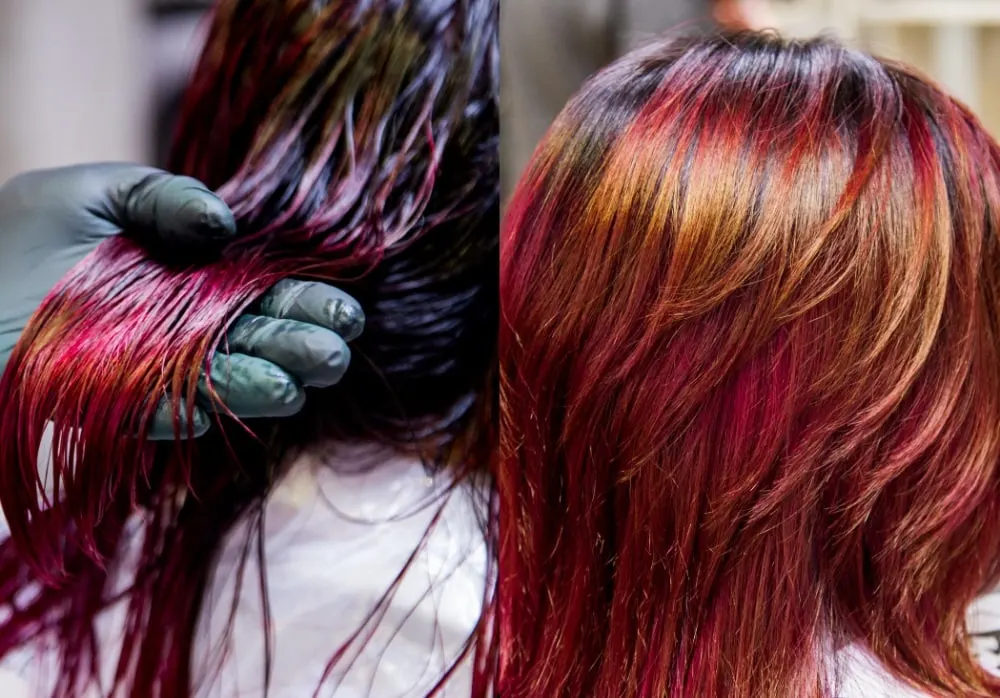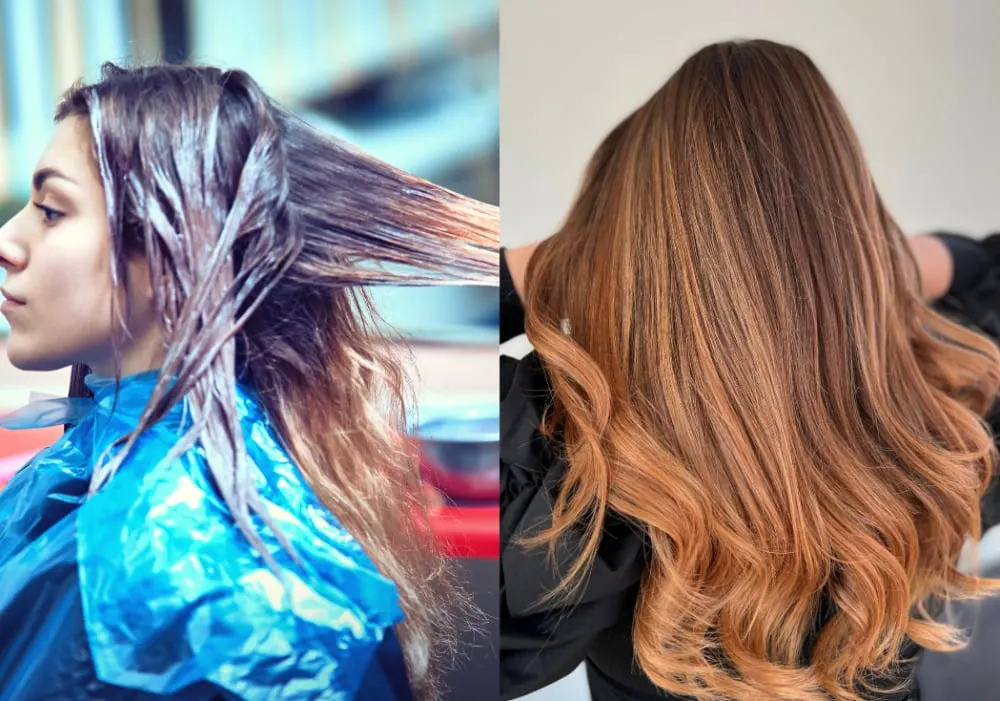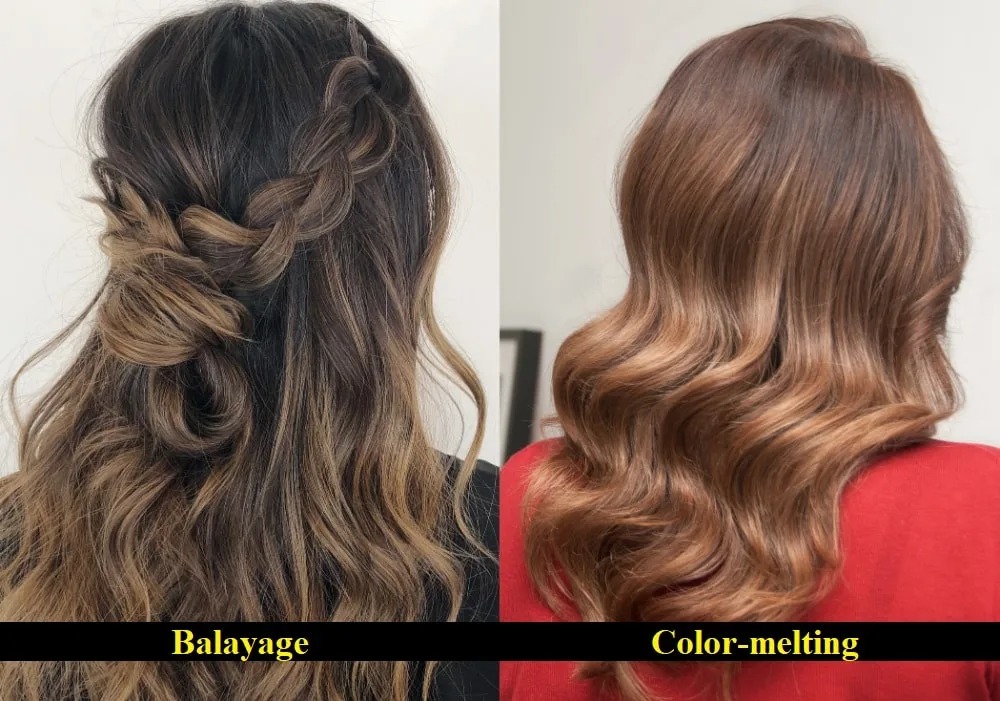With the ever-increasing demand for experimenting with hair colors, there are no brevity hair coloring techniques. And it makes it more confusing to identify which is what.
One of the major confusions in the hair color industry is the differences between color melting and balayage technique.
In this article, we’ll learn more about the popular balayage and color-melting techniques and the main differences between the two hair coloring methods. So, let’s get down to it.
What Is Color Melting?

Color melting is a technique that involves blending two or more different hair dye shades and applying them to your hair’s roots.
Although the method involves using different colors, they usually belong to the same family to create a perfect blend and a more natural look.
The main aim of this method is to create an illusion that the colors are melting together since there are no sharp root lines.
Color melting makes your hair look natural and softer, making it the best hair coloring technique if you don’t want to visit the salon regularly.
Color Melting Pros and Cons
Here is an evaluation of the pros and cons of color melting.
Pros
- Easy to maintain & less damaging.
- The color transition is quite smooth.
- It works with every color palette available, making it multi-dimensional.
- It can blend with your hair base to make unnatural hair colors appear more natural.
Cons
- It is costlier than other traditional hair coloring.
- Color melting lacks the depth of other highlighting techniques.
- As it became styleless, finding a colorist who is proficient in the hair dyeing method can be difficult.
What Is Balayage?

Balayage involves applying color to your hair just like when painting to achieve a natural, sun-kissed, lived-in look. Balayage combines the darker shades at the base with the ends to make the hair appear dimensional and softer.
This method has recently become common since it makes your hair look natural as it grows. It also makes your hair look more subtle than your normal foil highlight color.
Although not the best technique for every hair type, balayage is ideal for people who want ease in maintaining their hair with a more seamlessly blended color.
Balayage looks good on hair that’s medium to light in color. It’s a wonderful way of introducing someone to hair-lightening procedures because it can be done gently and naturally.
Balayage Pros and Cons
Here are the pros and cons of balayage.
Pros
- Quite affordable.
- Easy to maintain since the roots become less visible when your hair grows.
- It can serve you for some time.
- You can play the hair upwards or downwards, according to your preference.
Cons
- It makes your hair dry in the long run.
- This coloring technique doesn’t cover grey hairs.
- You’ll spend a lot of time when styling your hair.
What Do Color Melting and Balayage Hair Look Like?

Color melting and balayage have different effects on your hair. When you use the color melting technique, the colors look like they’re literally melting together, and you cannot tell where they stop or start.
The hair coloring technique also makes your hair appear lighter towards the end.
On the other hand, balayage involves using a lighter color to give your hair a more lightened natural look.
Instead of your hair having a color-blocked appearance, this hair coloring technique creates a smoother transition from darker to lighter strands. As a result, it appears more blended and multi-dimensional.
Major Differences Between Color Melt and Balayage Technique
Let’s look at the differences between color melt hair vs. balayage.
Applying Technique
Color melt and balayage hair coloring techniques are quite different in various ways. When it comes to color melting, the stylists apply two or three colors in an overlapping pattern and smudge the hair strands together with their fingers.
Conversely, balayage involves applying color to the hair in a sweeping, vertical motion with your fingers or brush tip to produce a natural highlight.
Appearance
Color melting uses two or three shades of hair dye, giving the hair a well-blended, multi-dimensional appearance. Color melting is less dimensional than balayage, but it still blends perfectly.
Cost
A color melting service typically costs between $150 to $175, while balayage hair coloring costs between $76 to $452.
The cost depends on the time a hair stylist spends during the entire process and the amount of dye used. The stylist’s level of expertise also influences the cost.
Generally, color melting makes your hair look more natural, while most balayage techniques are exaggerated.
Summary
Here is a table summarizing the difference between color melt hair vs. balayage.
|
Color melt |
Balayage |
|
|
Application technique |
It uses an overlapping technique
You have to smudge the hair strands using your fingers |
You need to use a sweeping and vertical motion You can use your fingers or the brush tip |
|
Appearance |
More multi-dimensional appearance
It makes your hair look more natural |
It appears less multi-dimensional Your hair color may look exaggerated |
|
Cost |
$150 to $175 |
$76 to $452 |
Although color melt and balayage are popular hair coloring techniques, they’re quite different, especially regarding the application methods and their effect on your hair.
These techniques also cost differently, with balayage being quite affordable. Depending on your preferences, either method can enhance your hair’s appearance and boost your self-esteem.
FAQs About Color Melt and Balayage
No. Color melting and ombre are different hair coloring techniques. Generally, color melting involves blending highlights with a base color, while ombre combines two colors with little to no highlights at the root.
Human hair grows quite fast. On average, your hair grows about half an inch per month.
Therefore, a hair coloring technique that doesn’t require coloring the roots requires a regular touch-up. For your hair to look good, color it afresh after 12-14 weeks.
You May Also Like:
